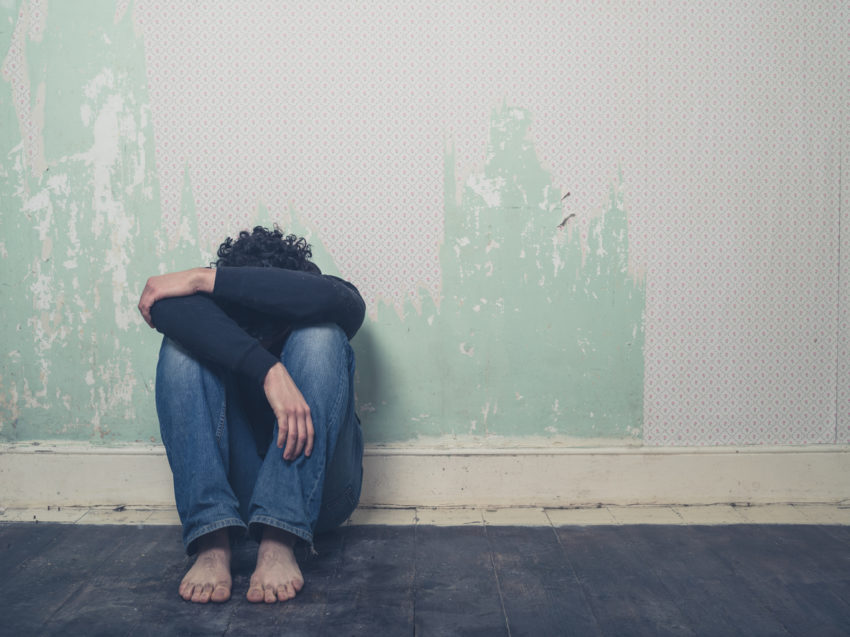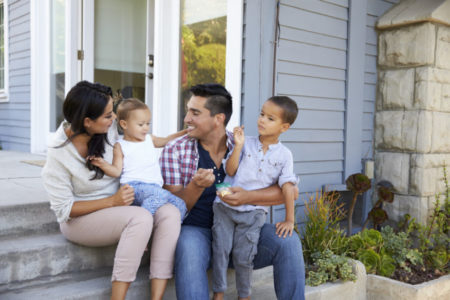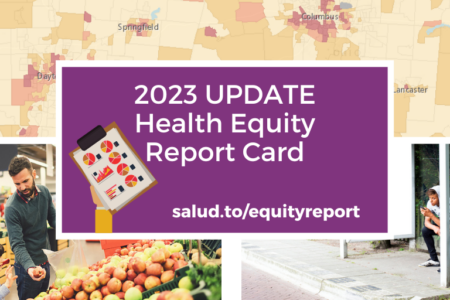
Share On Social!
Quality housing can make a surprisingly big difference for your physical and mental health.
A new study from the United Kingdom links housing tenure, type, cost burden, and desire to stay in current home to C-reactive protein (CRP), a biomarker in the bloodstream associated with infection and stress.
Higher levels of CRP—meaning more stress and bad health—were found in people who rented homes.
“The poorer health of private renters in our study may reflect the average lower quality of homes in the sector,” wrote Drs. Amy Clair and Amanda Hughes, the study authors, in an article in The Conversation.
“Private rented homes, for example, are more likely to have damp than social rented or owner occupied homes, and less likely to have central heating.”
Housing Cost Burden & Mental Health
The UK study found that renters “seem to have to place themselves under financial strain to access decent quality housing and avoid the negative health impacts of poor housing.”
Renters also tend to feel less of a sense of security and control about where they live.
There are gender effects, too.
Poor housing affordability had a greater negative impact on mental health for men than women, according to another study in Australia.
The study looked at the cumulative exposure to housing affordability stress (HAS) and its association with poorer mental health. The study concluded that average mental health was lower for individuals with longer exposure to HAS, the mental health effect appears to be due to compositional factors.
The UK and Australia studies highlight the need for more stable, affordable housing.
“This finding supports efforts to improve housing affordability, challenging the move from social to more expensive ‘affordable rent’ homes, and reductions to housing benefit,” according to Clair and Hughes.
The implications are important for Latinos.
Latinos face higher rates of depressive symptoms than many of their peers.
This population also is far more likely than their peers to have mental health issues. These issues usually go untreated, according to a Salud America! research review.
Fewer Latinos (8%) than whites (14%) reported that their child had ever used mental health care services, according to the research review.
Housing Costs Affects Latinos

More than half of Black and Latino households in major cities across the country are rent-burdened. They spend more than 30% of their incomes on housing.
Fifty years after the federal Fair Housing Act banned racial discrimination in lending, African Americans and Latinos continue to be routinely denied conventional mortgage loans at rates far higher than their white counterparts.
Studies suggest the average white family experienced an 11% reduction in wealth. But the average black family lost 31% of its wealth, and the average Latino family 44.7%. Latinos have higher risk of eviction and more than half of Latinos (54%) rent their home. That’s nearly twice as much as Whites (28%), according to Pew Research Center.
U.S. housing is at its least affordable in 10 years, according to a recent report.
Lack of affordable housing has strong implications for many Latinos and greatly impacts their quality of life.
Not enough attention is given to the impact of the low Latino homeownership rate on America’s ongoing economic recovery, and in turn, the future of the nation’s housing market and related issues.
Affordable Housing; A Solution for Latino Housing Crisis

Affordable housing is defined as that which costs no more than 30% of a household’s gross annual income.
True affordability is related to the cost not only of housing but also the cost of transportation from that location to work, child care, family, and healthcare.
Affordable housing is a critical element of any healthy community.
Latino millennials are diversifying the pool of recent millennial buyers, and have the potential to create a tremendous demand for homeownership and economy.
Hence, future homeownership rates depend on whether Latino millennials can afford to buy, as the Latino population and share of the workforce is growing. Currently, approximately 14.6 million Latinos are part of the millennial generation, the Pew Research Center reported.
Government policy should look at opportunities to create affordable housing attractive to young Latino families. Professionals who work with families and children should explore ways to incorporate affordable housing-informed policies and partnerships into their services.
See How Major Cities Are Encouraging Affordable Housing
Check out these stories about how cities and programs are finding unique ways to boost affordable housing for Latino and all people:
- Major steps toward Affordable housing in Austin, Texas
- Colorado City Could Mandate More Affordable Housing
- The Outside-the-Box Fix for Denver’s Affordable Housing Crisis
- San Antonio’s Daring New Polices for Affordable housing
- The Epic Revitalization of a Latino Neighborhood from Housing to Social Change
Improving “healthy” housing have been found to be most effective when there is an intentional commitment to addressing disparities and eliminating the root causes of housing hazards.
Learn more about the link between health and housing among Latinos by following our work on healthy communities and housing.
By The Numbers
56.9
percent
of Latinos are "housing cost burdened"



